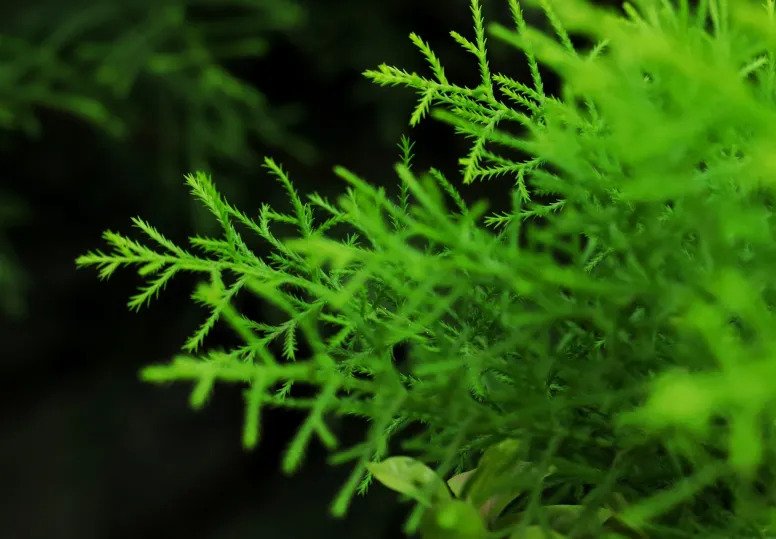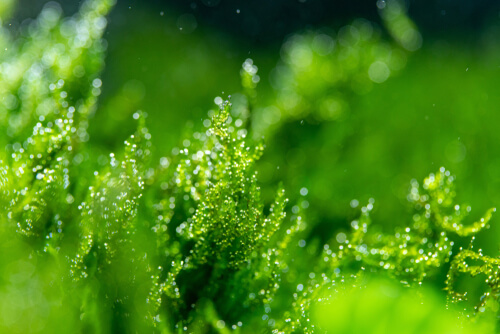Flame Moss vs Java Moss: Similarities, Differences & Design Ideas
Posted by on 01/25/2023
We use affiliate links and may receive a small commission on purchases.
Flame Moss and Java Moss are two of the most common types of mosses seen in the planted tank hobby. Both new and experienced hobbyists can use these mosses to create beautiful aquascapes, and they can also be incorporated into terrariums.
While both plants make great options for a foreground carpeting plant, they have been used in many creative ways in some of the hobby’s most award-winning tanks. In this post, we’ll compare the differences between these two mosses, and we’ll showcase some interesting aquascape designs using these plants.
Species Summary
At first glance, one may not realize that these plants are two different species. As close relatives, both of these plants share similarities but also have a few differences.

Flame Moss
One of the most interesting aspects of Flame Moss is that it has yet to be formally scientifically classified. However, it's understood that flame moss is a member of the Taxiphyllum genus of mosses, and is often referred to as Taxiphyllum sp. 'Flame Moss'.
The species is native to southeast Asia, where it thrives in humid, tropical climates along the banks of slow-moving rivers.
In the aquarium hobby, the species is most commonly used as a foreground plant, but has appeared in more creative aquascapes throughout the years.
The plant is a classic "set it and forget it" plant, and is undemanding, as hobbyists need to do very little for this plant to thrive. As long as there is some form of current, and temperatures ranging between 70-80°F, this plant will thrive in any freshwater aquarium.

Java Moss
Arguably the most popular moss plant in the freshwater aquarium hobby is Java Moss (scientific name: Taxiphyllum barbieri) and it's for good reason. Similar to Flame Moss, this plant requires no special care and can be grown in almost any freshwater environment.
Hobbyists have even had success growing the plant in brackish conditions, a true testament to the plant's durability and adaptation. Native to Vietnam, this plant is also referred to as Vesicularia dubyana.
Similarities
When it comes to similarities, both Java Moss and Flame Moss share identical care requirements. Both plant species can thrive in either a CO2 or non-CO2-injected environment and do not require nutrient dosing or strong lighting.
Both plants propagate easily, but for some hobbyists, this can be seen as a detriment. Once introduced to an aquarium, it's very difficult to completely remove either species.
Imagine a scenario where you own an aquarium where you've introduced Java Moss. Eventually, you decide that you want to re-scape your tank with a carpeting plant such as dwarf hairgrass or hemianthus callitrichoides. Small bits of moss can easily spread throughout the leaves of these plants, and will eventually begin to grow. Removal is often difficult. Since the moss is delicate, removing it with aquarium tweezers often results in the plant breaking apart and spreading throughout the tank. The only solution is to completely tear down and rebuild the tank without the moss.
This scenario is an edge case, but it's something that you should be aware of before deciding whether or not to purchase one of these mosses. For most hobbyists who are running a low-tech aquarium (dim lighting & no CO2), these mosses grow so slow it won't make much of a difference.
Differences
The most obvious difference between Flame Moss and Java Moss is their appearance. Java Moss tends to creep along the substrate and demonstrate horizontal growth, while Flame Moss will grow vertically, giving the "flame" appearance after which it's named.
Only Java Moss is scientifically classified, Flame Moss still awaits a formal classification, but for the most part, these plants are nearly identical.
Design Ideas
Both plants allow for interesting design ideas in a planted aquarium. Moss plants are frequently used in both low-tech and high-tech aquascapes, as they can add an "earthy feel" to the overall tank design.
Some of the following are common aquarium design strategies utilizing these plants.
Bonsai Tree Tops
Recreating a scene in nature inside an aquarium poses some interesting challenges.
Experienced aquascapers often use mosses on uniquely formed pieces of driftwood to give the impression of a canopy. This process is done by selecting a piece of driftwood, such as Mopani, to create an artificial tree trunk. The driftwood is then placed into the substrate and vertically oriented. At the top of the wood, Java Moss or Flame Moss is either glued or tied to the driftwood.
In time, the moss will expand outwards resembling a terrestrial bonsai tree.
Hardscape Carpet
Similar to the underwater bonsai trees, both Java Moss and Flame Moss are frequently glued or tied to different hardscape pieces, such as seiryu stones and driftwood.
After a few months have passed, the hardscape is usually completely covered in moss, giving your aquarium an earthy look that resembles moss growing in nature.
Foreground Lawn
You don't need to rely on CO2 to grow foreground carpeting plants. Many hobbyists and experienced aquascapers frequently use moss as a carpeting plant in a low-tech environment.
Given enough time, both Flame Moss and Java Moss will completely cover the substrate, creating a unique carpet that is sure to be enjoyed by your tank inhabitants.
Best of all, there's very little maintenance required when carpeting an aquarium with moss. Since both of these plants are slow growers, they have a low rate of nutrient uptake and can survive purely off the waste produced by your tank inhabitants.
Conclusion
Now that we've covered the fundamentals for these two plants, do you plan on adding one of them to your aquarium? There's certainly no shortage of interesting design ideas where you can incorporate these moss plants.
Whether you're a fish breeder who's looking to add some plants to a breeding tank, or a hobbyist looking to build an awesome planted tank, Flame Moss and Java Moss make for excellent choices.
Let us know if you plan on adding one of these species (occasionally they go up for sale on our marketplace) and be sure to check out our community forum, where you can discuss everything related to planted tanks.
December's Giveaways on Light Fish


















